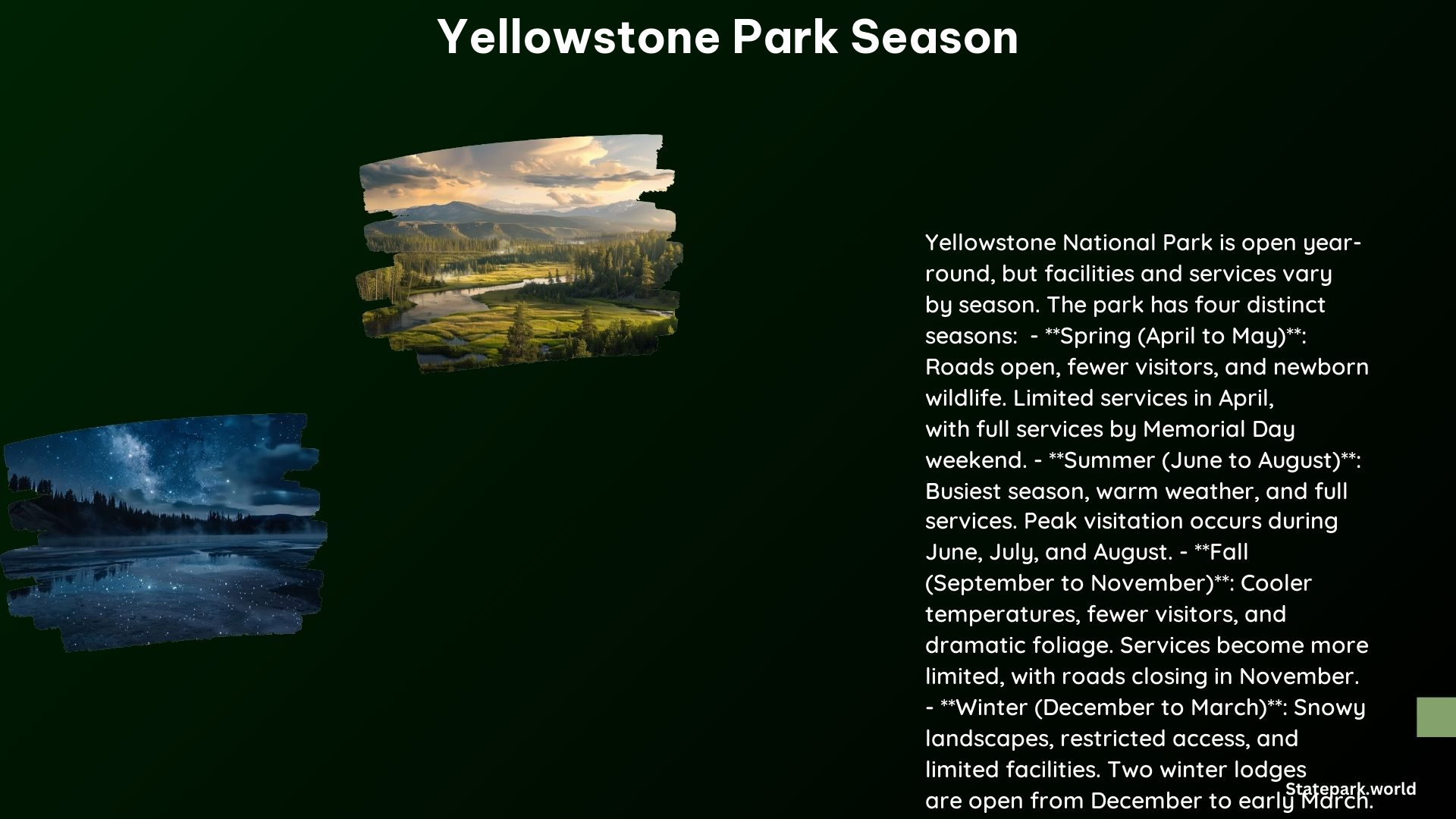Yellowstone National Park is a vast and diverse wilderness that offers a unique experience for visitors throughout the year. Whether you’re a seasoned outdoor enthusiast or a first-time explorer, understanding the park’s seasonal changes can help you plan the perfect trip. In this comprehensive guide, we’ll dive into the details of each season in Yellowstone, highlighting the activities, services, and considerations to make the most of your visit.
Spring in Yellowstone (April to May)
As the winter thaws and the landscape begins to green, Yellowstone comes alive in the spring. This shoulder season offers a chance to witness the park’s natural wonders with fewer crowds and more temperate weather. During this time, visitors can enjoy a variety of activities, including:
- Hiking and backpacking through the park’s trails as they emerge from the snow
- Skiing and snowshoeing in the remaining snow-covered areas
- Observing the park’s wildlife, including newborn animals like bison calves and elk calves
However, it’s important to note that services and facilities in the park are limited during the spring. Many roads and campgrounds may still be closed, and some visitor centers and lodges may have reduced hours or be closed entirely. It’s essential to check the park’s website for the latest updates on openings and closures.
Summer in Yellowstone (June to August)

The summer months in Yellowstone are the busiest and most popular time to visit. With warm weather, blooming wildflowers, and flowing waterfalls, the park offers a wealth of activities for visitors, including:
- Boating, camping, and fishing in the park’s lakes and rivers
- Hiking and backpacking through the park’s extensive trail system
- Participating in ranger-led programs and guided tours
- Horseback riding and other outdoor adventures
During the summer, all roads and facilities in the park are open, providing visitors with full access to the park’s attractions. However, this also means that the park can be quite crowded, especially during peak visitation periods. To avoid the crowds, consider visiting during the shoulder seasons or planning your trip for the early morning or late afternoon.
Fall in Yellowstone (September to November)
As the summer heat gives way to the crisp, cool air of autumn, Yellowstone transforms into a stunning display of color. The park’s forests and meadows come alive with vibrant yellows, oranges, and reds, making it an ideal time for photography and scenic drives. During the fall, visitors can enjoy:
- Hiking and backpacking through the park’s trails, with fewer crowds and cooler temperatures
- Camping and exploring the park’s natural wonders
- Guided tours and wildlife watching, as animals prepare for the winter
As the fall season progresses, the park’s facilities and services begin to close down, with campgrounds, lodges, and dining options shutting their doors. By November, most roads in the park are closed, and the park transitions into its winter mode.
Winter in Yellowstone (December to March)
Yellowstone’s winter season is a magical time, with the park blanketed in snow and the wildlife adapting to the harsh conditions. During this time, visitors can experience the park in a unique way, with activities such as:
- Oversnow travel, including snowmobiling, snowshoeing, and cross-country skiing
- Guided tours and wildlife watching, as animals like bison, elk, and wolves become more visible
- Visiting the park’s two open winter lodges, which offer a cozy respite from the cold
However, it’s important to note that access to the park’s interior is limited during the winter, with many roads and facilities closed. Visitors should be prepared for the cold temperatures and plan their trip accordingly.
Passes and Costs
Yellowstone National Park offers several pass options for visitors, each with its own benefits and considerations:
- Annual Yellowstone Park Pass: $70 per year, providing unlimited access to Yellowstone National Park.
- America the Beautiful National Park Pass: $80 per year, valid for entry to all national parks and federal recreation lands.
When comparing the two passes, the America the Beautiful National Park Pass may be the better option for visitors who plan to explore multiple national parks during their travels, as it provides access to a wider range of destinations. However, the Annual Yellowstone Park Pass is a great choice for those who intend to focus their visit primarily on Yellowstone.
Conclusion
Yellowstone National Park is a true gem, offering visitors a unique and unforgettable experience throughout the year. By understanding the park’s seasonal changes and planning your trip accordingly, you can ensure that you make the most of your visit, whether you’re seeking outdoor adventures, wildlife viewing, or simply soaking in the park’s natural beauty. So, start planning your Yellowstone adventure today and get ready to explore one of America’s most iconic national parks.
References
- https://www.yellowstonenationalparklodges.com/stay/plan/opening-and-closing-dates/
- https://www.nps.gov/yell/planyourvisit/seasonalhighlights.htm
- https://theloverspassport.com/yellowstone-opening-closing-dates/
- https://www.yellowstonenationalparklodges.com/connect/yellowstone-hot-spot/infographic-guide-to-the-seasons-in-yellowstone/
- https://www.nps.gov/yell/planyourvisit/operating-dates.htm
